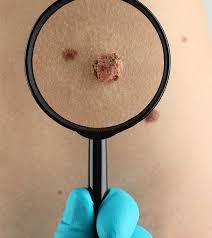Introduction
Melanoma, typically associated with adults, has been observed in children and adolescents, with certain risk factors coming to light in a recent eBioMedicine study.
Understanding Melanoma in Younger Age Groups
Melanoma is predominantly an adult skin cancer, but it can affect younger individuals.
Incidence rates are significantly low in children under 15, but they rise exponentially with age due to cumulative sunlight exposure.
The World Health Organization classifies melanomas into three groups: conventional adult-type melanomas (CM), spitzoid melanomas (SM), and melanomas arising in congenital nevi (CNM).
Distinguishing between SM and CM is challenging as both can resemble benign lesions. Pediatric melanomas also exhibit different symptoms from adult cases.
Genetic Insights
Genetic studies have identified similarities between CM and adult melanoma, particularly regarding driver mutations like PTEN, BRAF, CDKN2A deletions, kinase fusions, and UV exposure.
Data on SM and CNM are limited, but some studies suggest an association with NTRK1, ROS1, and MET genes. High-risk melanoma genes like CDK4 and CDKN2A have been sporadically found in pediatric melanomas.
Tip: Please fill out this form to determine whether or not you or a friend are eligible for a CGM and, Also learn about Diabetes Tracking
Research on Pediatric Melanoma
Due to the rarity of melanoma in children and adolescents compared to adults, there is limited research on its biology, causes, and tumor characteristics in these age groups.
Study Details
This study aimed to characterize pediatric melanoma and identify genetic alterations for accurate SM and CM diagnosis.
Included 26 participants under 21 years old diagnosed with pediatric melanoma (SM, CM, or other melanomas).
Patient samples were analyzed by dermatopathologists for histopathological diagnosis.
Study Findings
Of the 26 patients, 12 had SM, 10 had CM, and 4 had other melanomas.
Median age was 12 years with a median follow-up of 3.3 years, and about 62% were female.
Skin cancer was most common in the extremities, followed by the head and neck.
In the CM group, three patients had metastatic disease, resulting in two deaths within a year of diagnosis.
5-year overall survival was 100% for SM patients but only 67% for CM patients.
Read Guide about Wegovy Dosage Guide: The Best Way For Weight Loss
Genetic and Environmental Factors
The study revealed melanoma’s association with a sequence of mutations that may manifest years or decades after childhood sunburns.
MC1R germline variants and UV radiation exposure were identified as significant factors in pediatric melanoma development.
Nine MC1R variants indicated a higher risk of melanoma in those with limited risk phenotypes, with 80% of CM patients having these variants.
The R151C variant was strongly linked to pediatric melanoma, and other variants (V92M, R160W, D84E) were rare but present.
MC1R variants R160W, V92M, and R151C were seen to increase melanoma risk in children and adults, especially in combination with UV exposure.
Genomic analysis revealed higher allele frequency for these variants in pediatric melanoma patients compared to adults.
A combination of CDKN2A carriers with multiple MC1R variants increased melanoma risk.
Must Read About: Late-Night Snacking May Increase Risk Of Developing Diabetes And Heart Disease.
UV-Induced DNA Damage
UV-induced DNA damage was linked to SM in the pediatric population.
Both groups (SM and CM) exhibited similar genetic patterns, including the common prevalence of BRAF and TERTp mutations and UV-induced DNA damage.
SM was not associated with adult-type driver mutations except for two CTNNB1 hotspot variants (S37F and S45F).
Conclusion
The study emphasized the impact of MC1R variants in early-onset CM among pediatric patients, although further large-scale genetic studies are needed to confirm this finding.
Distinguishing melanoma subtypes through tumor-normal sequencing could inform improved prevention and treatment strategies.


